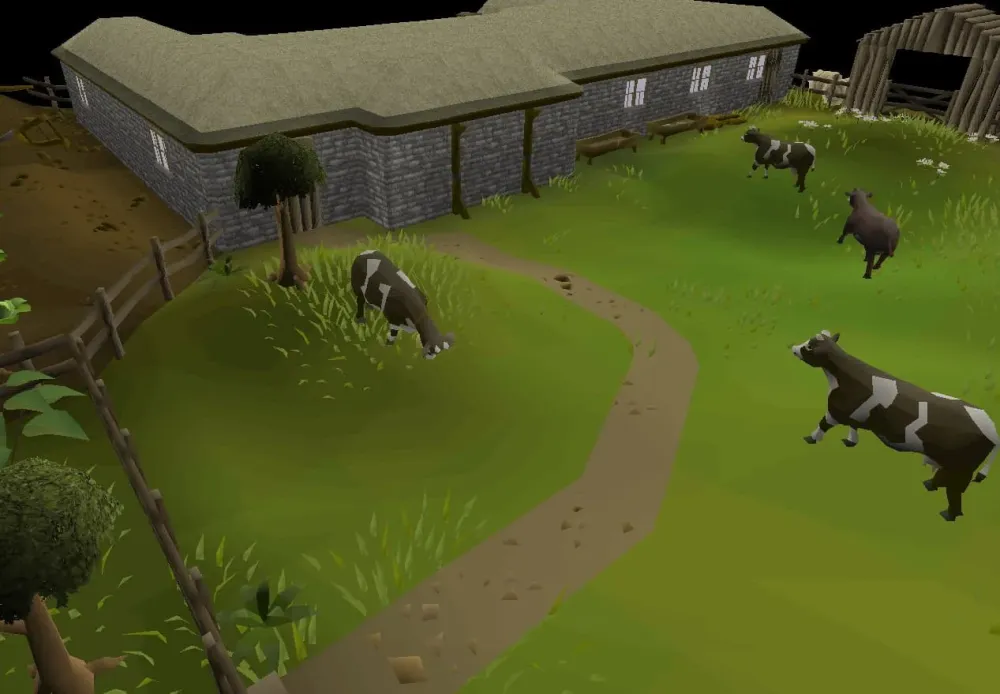Your cart is empty
OSRS Farming for Profit Ultimate Guide 2025

Farming in Old School RuneScape (OSRS) is a skill that blends patience with profitability, offering players a chance to grow crops, herbs, and trees for substantial in-game wealth. Whether you’re a seasoned player or just starting, this guide dives into the most profitable farming methods, optimized strategies, and insider tips to maximize your gold per hour (GP/h) in 2025. With the right approach, herb runs, tree runs, and other crops can turn your patches into a gold-making machine.
Farming stands out in OSRS because it’s semi-passive, allowing you to plant seeds, log off, and return to harvest valuable crops. The skill ties closely with Herblore and Cooking, making your harvests highly sought after on the Grand Exchange (GE). High-level herbs like Ranarr and Snapdragon, for instance, are in constant demand for potions, driving their prices and your profits.
Key Benefits of Farming for Profit
- Passive Income: Crops grow even when you’re offline, requiring minimal active playtime.
- High Demand: Herbs and other crops are essential for training Herblore, ensuring consistent GE sales.
- Scalable Profits: Unlocking more patches and boosts increases your yield and GP/h.
Initial Requirements
To start farming profitably, you’ll need a minimum of 9 Farming for basic herbs, though level 32 is ideal for Ranarrs. Essential tools include a rake, seed dibber, spade, and magic secateurs (from Fairytale I – Growing Pains). Ultracompost, available on the GE, is critical to reduce disease and boost yields.
Most Profitable Crops for Farming

Not all crops are equal when it comes to profit. Herbs dominate due to their high GE prices and quick growth cycles, but other options like trees and special crops can supplement your income. Below, we break down the top choices based on current market trends.
Herb Farming: The Gold Standard
Herbs are the backbone of farming profits, with Ranarr, Snapdragon, and Toadflax leading the pack. Each herb run takes about 80 minutes to grow and 5-10 minutes to complete, yielding massive GP/h when optimized.
| Herb | Farming Level | Seed Cost (GP) | Avg. Herb Yield/Patch | Profit/Patch (GP) | Total Profit (10 Patches, GP) |
|---|---|---|---|---|---|
| Ranarr | 32 | 24,700 | 8.8 | 51,400 | 2,630,000 |
| Snapdragon | 62 | 28,000 | 8.8 | 40,000 | 2,080,000 |
| Toadflax | 38 | 900 | 8.8 | 22,600 | 1,860,000 |
| Lantadyme | 73 | 1,700 | 8.8 | 14,300 | 1,380,000 |
Note: Profits assume ultracompost, magic secateurs, and 90% survival rate. Prices are based on GE data from April 2025.
Tree and Fruit Tree Runs
Tree runs are less frequent but offer passive profits. Magic trees (level 75) and palm trees (level 68) are top picks, yielding logs and coconuts that sell well. Expect 150,000-200,000 GP per magic tree and 50,000-70,000 GP per palm tree run.
Special Crops for Extra Income
- Potato Cactus: At level 64, plant in Al Kharid or Farming Guild for 10-20 potato cacti per patch, worth ~1,000 GP each.
- Limpwurt Roots: Level 26, plant in flower patches during herb runs for ~4,800 GP profit per seed.
- Snape Grass: Level 61, plant in allotment patches for prayer potion ingredients, netting ~15,000 GP per run.
Optimizing Your Herb Runs for Maximum Profit
Herb runs are the most lucrative farming activity, often exceeding 2M GP/h when done efficiently. Here’s how to optimize your setup and route.
Essential Gear and Inventory
- Magic Secateurs: 10% yield boost, mandatory for herbs. Equip them during harvest.
- Graceful Outfit: Reduces run energy drain for faster runs.
- Bottomless Compost Bucket: Halves compost costs over time.
- Inventory: 9-10 herb seeds, ultracompost, rake, seed dibber, spade, and teleports (e.g., Explorer’s Ring, Ectophial, Amulet of Glory).
Unlocking All Herb Patches
There are 9 herb patches in OSRS, with 5 requiring unlocks. Access them for maximum profit:
- Catherby, Falador, Ardougne: No requirements.
- Morytania: Complete Priest in Peril for Ectophial teleport.
- Trollheim: Complete My Arm’s Big Adventure for disease-free patch.
- Weiss: Complete Making Friends with My Arm for another disease-free patch.
- Hosidius: 50% Hosidius favor for disease protection after Easy Kourend Diary.
- Farming Guild: Level 65 for Tier 2 patch.
Efficient Herb Run Route
A streamlined route minimizes time and maximizes GP/h. Try this order:
- Falador: Teleport with Explorer’s Ring.
- Catherby: Camelot teleport.
- Ardougne: Ardougne Cloak 2 teleport.
- Morytania: Ectophial teleport.
- Trollheim: Stony basalt or Trollheim teleport.
- Weiss: Icy basalt teleport.
- Hosidius: Tithe Farm minigame teleport.
- Farming Guild: Skills necklace or fairy ring (CIR).
This route takes ~6 minutes with teleports, yielding up to 2.63M GP/h with Ranarrs.
Boosting Yields and Reducing Costs
Maximizing profits requires increasing herb yields and minimizing losses from disease or high seed costs. Here are proven strategies.
Yield Boosts
- Farming Cape: 5% chance to save harvest lives at level 99.
- Kandarin Diary (Hard/Elite): 10-15% extra yield at Catherby patch.
- Attas Seeds: Plant in Farming Guild anima patch for 5% yield boost across all patches.
- Garden Pie: Boosts Farming by 3 levels to plant higher-tier herbs early (e.g., Ranarrs at 29).
Cost-Saving Tips
- Disease-Free Patches: Trollheim, Weiss, and Hosidius patches reduce crop deaths, saving seeds.
- Grow Protection Crops: Plant white lilies in flower patches to protect allotments, saving payment costs for fruit trees.
- Buy in Bulk: Purchase ultracompost and seeds in large quantities when prices dip on the GE.
Advanced Tips and Common Mistakes to Avoid
To take your farming to the next level, incorporate these advanced strategies and steer clear of pitfalls that can eat into your profits.
Advanced Strategies
- Farming Contracts: Available at Hosidius or Prifddinas, these reward specific crop growth with XP and rare seeds, boosting profits.
- Combine Runs: Pair herb runs with limpwurt, snape grass, or cactus spine harvests for extra GP.
- Time Management: Plan runs every 80 minutes to align with herb growth cycles. Use RuneLite’s farming timer plugin for precision.
Common Mistakes
- Skipping Ultracompost: Regular compost drastically reduces yields and increases disease risk.
- Ignoring Teleports: Walking to patches wastes time, cutting into GP/h.
Planting Low-Profit Herbs: Avoid Guam, Marrentill, or Tarromin, as they yield minimal returns.
Farming in OSRS is a low-effort, high-reward skill that can net millions per hour with the right setup. Focus on herb runs with Ranarrs or Snapdragons, unlock all patches, and use yield-boosting items like magic secateurs and ultracompost. Supplement with tree runs, potato cacti, and limpwurts for diversified income. With these strategies, your farming journey will be both profitable and efficient. Happy farming, and may your patches be ever fruitful!
